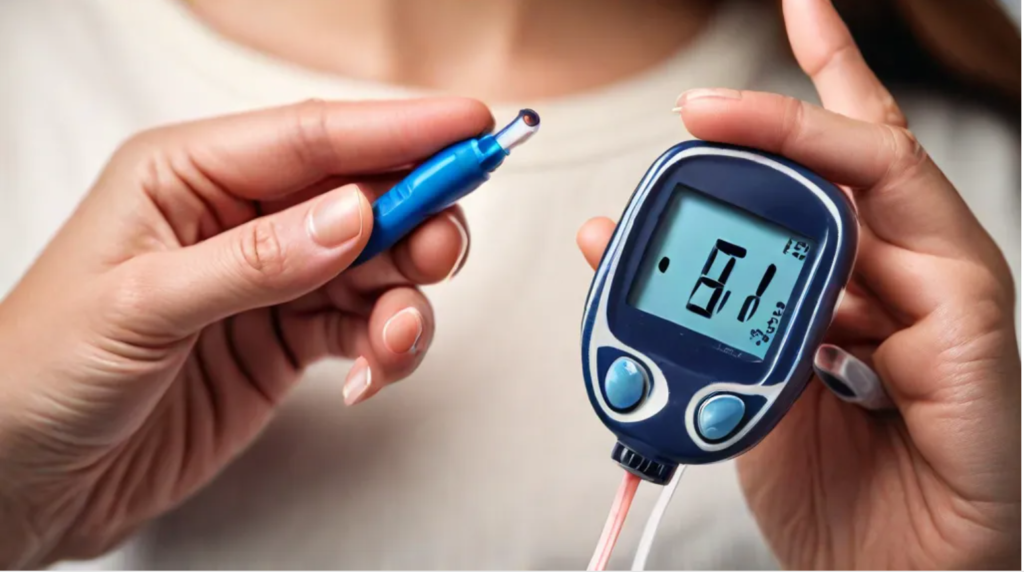Living with diabetes isn’t easy. Yet, knowing about each type helps people stay healthy. Diabetes affects how our body handles blood sugar, which gives us energy. Let’s explore each type in detail.
What Makes Blood Sugar So Important?
Our bodies need sugar for energy. Just like cars need gas, we need sugar to move and think. Every cell in our body uses this fuel. But too much or too little sugar causes big problems.
Blood sugar control keeps us healthy. When this system breaks, diabetes happens. Different types of diabetes affect this control in unique ways.
Type 1 Diabetes
The body stops making insulin in Type 1 diabetes. Think of insulin as a key that lets sugar into our cells. Kids and young adults often get this type first.
People with Type 1 diabetes need daily insulin shots to stay alive. Their immune system attacks cells that make insulin. Nobody knows exactly why this happens.
Early signs include feeling very thirsty and tired. Some people lose weight quickly without trying. Others need to use the bathroom more often.
Regular blood sugar checks help manage Type 1 diabetes. Exercise and healthy food choices play big roles too. Many people use insulin pumps to make treatment easier.
New tools help track blood sugar levels all day long. Smart watches and phone apps make tracking easier. These devices warn people when sugar levels change too fast.
Type 2 Diabetes
Type 2 is the most common form. The body makes insulin but doesn’t use it well. Poor food choices and lack of fitness often lead to this type.
Being overweight raises the risk of getting Type 2 diabetes. However, thin people can get it too. Age and family history matter a lot.
Some people control Type 2 with diet and exercise alone. Others need pills or insulin shots. Making smart food choices helps keep blood sugar steady.
Warning signs come on slowly with Type 2 diabetes. Many people have it for years without knowing. Regular check-ups can catch it early.
Small changes make big differences with Type 2 diabetes. Walking after meals helps a lot. Drinking water instead of sweet drinks matters too.
Gestational Diabetes
This type shows up during pregnancy. The body has trouble using insulin while carrying a baby. Most women get better after giving birth.
Regular check-ups help keep both mom and baby safe. Healthy eating and gentle exercise make a big difference. Some women might need insulin for a while.
Doctors watch these moms closely after pregnancy. They have a higher chance of getting Type 2 diabetes later. Staying fit helps lower this risk.
Extra care during pregnancy protects the baby. Good blood sugar control helps babies grow right. It also makes delivery safer for both mom and baby.
Living with Diabetes
Daily exercise helps all types of diabetes. A short walk after meals can lower blood sugar. Swimming and bike riding are good choices too.
Smart food picks matter more than most think. Vegetables, lean meats, and whole grains help control blood sugar. Small, regular meals work better than big ones.
Testing blood sugar gives important information. It shows how food and exercise affect the body. This helps people make better choices each day.
Taking Control of Diabetes
Support groups help people with diabetes feel less alone. Sharing tips and stories makes the journey easier. Local hospitals often host these meetings.
Learning about new treatments gives hope. Scientists work hard to find better ways to help. Some people join research studies to try new medicines.
Stress management plays a big role too. High stress can raise blood sugar levels. Simple breathing exercises and walks in nature help reduce stress.
Building Healthy Habits
Making changes takes time and patience. Start with one small change each week. Success builds on success.
Keep healthy snacks ready for busy days. Cut-up vegetables and nuts make good choices. Having them ready makes it easier to eat right.
Find fun ways to stay active. Dance classes and sports leagues work well. The best exercise is the one you enjoy doing.
Conclusion of diabetes
Understanding these three types of diabetes helps people make better health choices. Each type needs its own care plan. Working with doctors and staying active makes living with diabetes easier.
Knowledge gives power over diabetes. Small steps lead to big improvements. With good care, people with diabetes live full, happy lives.
Frequently Asked Questions
Q: Can diabetes go away on its own?
A: Type 1 never goes away. Type 2 might get better with healthy habits. Gestational usually ends after pregnancy.
Q: Does eating sugar cause diabetes?
A: Sugar alone doesn’t cause diabetes. Poor overall diet and lack of fitness raise the risk of Type 2.
Q: How often should people with diabetes exercise?
A: Aim for 30 minutes of activity most days. Start slow and build up over time.
Q: What foods help control diabetes?
A: Fresh vegetables, lean proteins, and whole grains work well. Small portions help too.
Q: Can stress affect diabetes?
A: Yes, stress can raise blood sugar levels. Finding ways to relax helps manage diabetes better.
Q: Is diabetes genetic?
A: Family history plays a role, but lifestyle choices matter too. Staying fit lowers the risk.
Q: How often should blood sugar be checked?
A: It varies by diabetes type and treatment plan. Your doctor will help set the right schedule.
Q: What should I do if my blood sugar gets too low?
A: Keep fast-acting sugar handy. Juice or glucose tablets work well. Tell your doctor about low blood sugar episodes.
Q: Can people with diabetes eat fruit?
A: Yes, but portion size matters. Whole fruits are better than juice. Some fruits affect blood sugar more than others.








